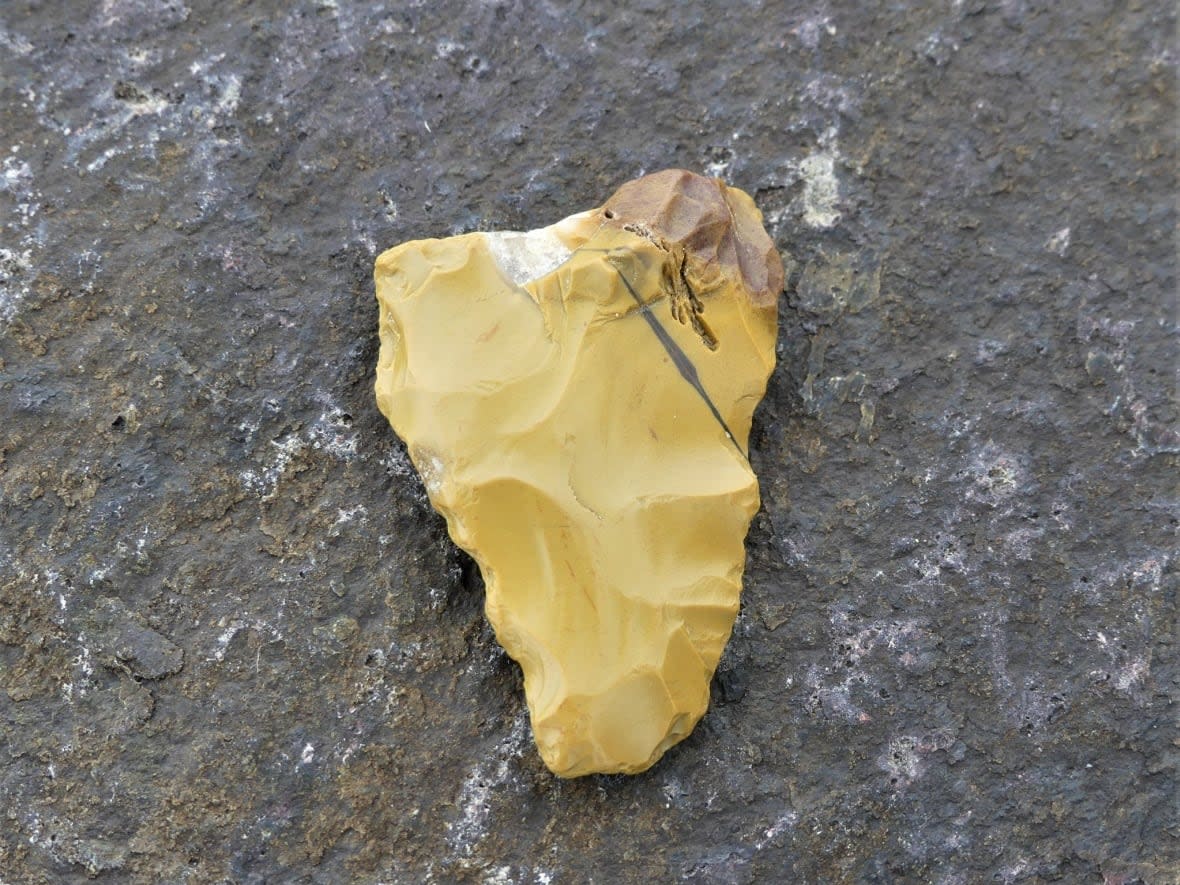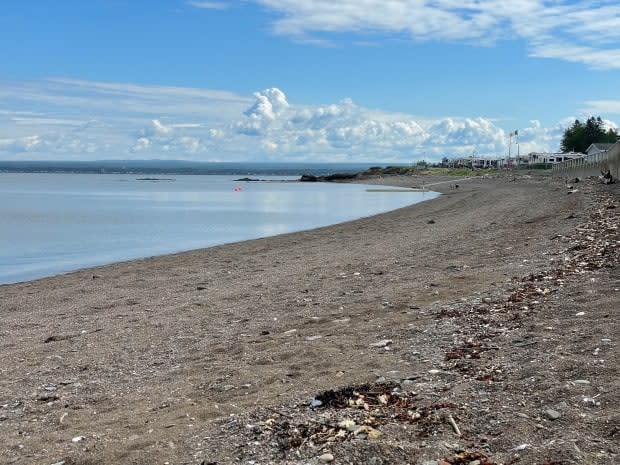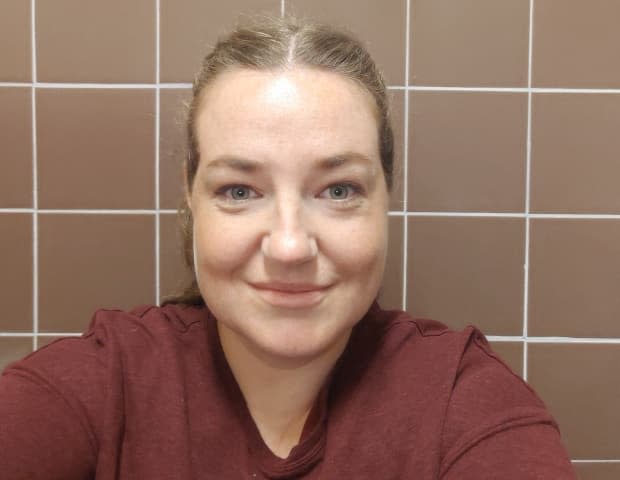You find an Indigenous artifact on a beach. What should you do?

During a walk on Inch Arran Beach in Dalhousie one afternoon, Yolande Gendron, like many who've walked along New Brunswick waterways over the years, came across a small, sharp stone unlike any other stones on the shore.
This one was yellow, a flaked stone tool made the way an arrowhead or a spear point would be, she said.
According to Austin Paul, the First Nations specialist at N.B. Power, the tool was likely broken in half during the manufacturing process.
"It was a cutting implement," said Paul, a member of Kingsclear First Nation who has worked as the archeological field technician for multiple companies in New Brunswick.
"So whether it was an arrowhead or a spear point, which it could very well have been, it could also have been something like a cutting blade, a knife blade or something like that."

An unexpected find
About two inches long and an inch wide, this was the first Indigenous artifact Gendron had come across in her 63 years of living in Dalhousie.
Gendron is a self-proclaimed "beachcomber" and regularly collects sea glass, agates and fossils.
"There it was, just on the sand like that, pointing out," she said.
Like many people who've made similar discoveries, Gendron kept the possible spear point, but she hopes to have it authenticated and said she will get in touch with the provincial Department of Tourism, Culture and Heritage. It's now part of the collection of things she's picked up from the beach.
The spear points, arrowheads and other sharp tools once used by the Mi'kmaq and Wolastoqey of this region are not uncommon finds, Paul said, "especially if you have your eye to the ground."
But within First Nations communities, there are sensitivities around collecting artifacts, he said, and different views about what should happen to them.
Some community members believe artifacts should be left on the land and not tampered with. Others value the study and protection of artifacts, he said.
"It's a very complicated, multifaceted situation," Paul said. "It's not only cultural material, it's artistic material and functional tools."
More common where soil has been disturbed
"Projectile points," in archeology jargon, are most likely to be found in places where there is erosion or surface disturbance of the soil, said David Black, an anthropologist from University of New Brunswick.
However, Black said the rock found by Gendron has come from Nova Scotia because it's a mustard yellow, and there is a band of silica on the upper right side. He believes it is from the North Mountain area of southwestern Nova Scotia or from the Minas Basin, on the eastern side of the Bay of Fundy.
"The volcanic rocks around the Minas Basin and the North Mountain have a lot of high-silica rocks in them as bands and layers," said Black. "People really highly prized those rocks and traded them around a lot in the Maritimes, and even further in the Maritimes, and even further afield."
The "non-technical" term for this type of rock is jasper, which was not traded among Indigenous groups before 2,500 years ago, according to Black.
He estimates the artifact found by Gendron dates from "somewhere between 2,500 years ago and European contact about 400 to 500 years ago."
He said this is a ballpark estimate, since he hasn't seen the rock in person.
The steps after a discovery
Paul emphasized that there are rules and regulations people should follow if they come across an Indigenous artifact.
According to the Heritage Conservation Act, all archeological objects found in New Brunswick are the property of the Crown and must be donated to provincial archeological collections.
Objects of Indigenous origin are held in trust for First Nations, according to Anne Hamilton of the Department of Tourism, Heritage and Culture.
After a discovery, Hamilton said, First Nation communities are notified immediately to "let them know that an object has been found in a repository."

When the time comes, those objects "ultimately will be returned to the communities," she said.
Hamilton does not have a timeline for when this will happen but said the archeology and heritage branch of the department "certainly supports that happening."
People who think they might have found an artifact such as an arrowhead should contact the archeology and heritage branch. They will be asked where they found it and whether they can send a picture.
The branch will then take steps to send somebody to register the archeological site, Hamilton said.
The most important thing, she said, is not to go digging for more artifacts since this can destroy the site.
"Archaeologists have very specific training to excavate sites and document all of the data," Hamilton said. "By taking a shovel or digging with your hands, you're destroying that data, the story that those objects have to tell."


